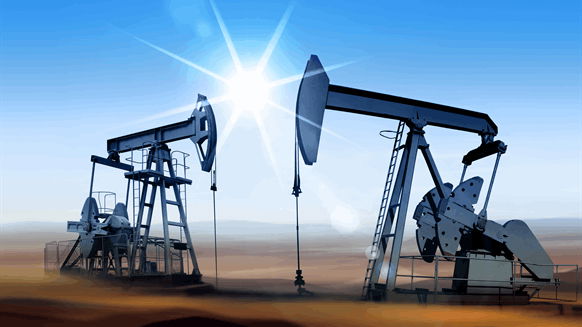Comprehensive Guide to BTA Drilling in Special Non-Mag, Austenitic Mn-Cr Steel with High Nitrogen Content

Introduction
BTA (Boring & Trepanning Association) deep hole drilling is a crucial process for machining high-performance materials such as non-magnetic, austenitic Mn-Cr steel with high nitrogen content. These materials are commonly used in the oil & gas, aerospace, and drilling industries, especially for MWD/LWD non-magnetic drill collars.
This article addresses the key challenges, recommended tooling, cutting parameters, and coolant selection for optimized BTA drilling performance.
1. Challenges of Drilling Non-Mag, Austenitic Mn-Cr Steel (High N Content)
Q: What makes non-magnetic, austenitic Mn-Cr steel difficult to drill?
These materials have unique properties that make machining complex:
High Work Hardening Tendency – Cutting forces cause the material to harden rapidly, leading to faster tool wear.
High Toughness & Ductility – Makes chip control difficult and increases cutting resistance.
Low Thermal Conductivity – Heat remains concentrated in the cutting zone, accelerating tool failure.
Galling & Built-Up Edge (BUE) – Chips tend to stick to the tool, reducing cutting efficiency.
High Nitrogen Content – Increases strength but also raises cutting resistance.
2. BTA Drilling Strategy for Non-Mag Austenitic Mn-Cr Steel
Q: What type of tool material should be used for BTA drilling in these steels?
Carbide Inserts (TiAlN, AlCrN, or CVD Coatings) – Provides wear resistance and heat protection.
Guide Pads – Use PCD-coated or cermet guide pads to reduce friction and material adhesion.
Positive Rake Angle – Reduces cutting forces and prevents excessive tool wear.
Q: What are the recommended cutting parameters?
| Parameter | Recommended Value |
|---|---|
| Cutting Speed (Vc) | 40-60 m/min |
| Feed Rate (f) | 0.05 - 0.15 mm/rev |
| Coolant Pressure | 50+ bar |
| Coolant Type | Water-soluble oil-based or synthetic |
| Depth of Cut | Optimized for tool performance |
Q: How to manage chip evacuation in BTA drilling?
Use High-Pressure Coolant (HPC) (50+ bar) – Ensures proper chip evacuation and cooling.
Optimize Feed Rate & Chip Breaker Design – Prevents long, stringy chips from clogging the tool.
Ensure Proper Filtration – Recirculating dirty coolant can damage tools and machine components.
3. Recommended Cutting Fluids for BTA Drilling
Q: What type of cutting fluid is best for BTA drilling?
Selecting the right coolant is critical for deep hole drilling. Here’s a comparison of the best options:
| Coolant Type | Best for BTA Drilling? | Advantages |
| Neat Cutting Oil (Oil-Based Coolant) | ✅ Best for extreme-pressure drilling | High lubricity, anti-wear protection, prevents BUE formation. |
| Ultra-Grinding Fluids (Fully Synthetic) | ❌ Not suitable | Designed for grinding, lacks required lubricity for BTA drilling. |
| Ultra-Cool (Semi-Synthetic Coolant) | ✅ Good for standard BTA drilling | Water-soluble, provides cooling & lubricity but not for extreme conditions. |
| Environmentally Friendly Cutting Oils | ❌ Not recommended | Lacks extreme-pressure additives needed for deep drilling. |
Q: Which specific cutting oil brands are recommended?
| Brand | Product | Type |
| Blaser Swisslube | Blasocut 4000 Strong | Water-soluble oil |
| Castrol | Hysol XBB Series | Semi-synthetic |
| Quaker Houghton | Hocut 795-H | Water-miscible oil |
| Master Fluid Solutions | Trim MicroSol 585XT | Semi-synthetic |
| Fuchs | Ecocool 700 NBF | Synthetic |
| Cimcool | Cimtech 500 | Extreme-pressure synthetic |
Q: What is the ideal coolant concentration?
| Material | Concentration (%) |
| Carbon & Alloy Steels | 6-10% |
| Stainless & Non-Mag Steels | 8-12% |
| Superalloys & Titanium | 12-15% |
| Cast Iron | 5-8% |
4. P-Series Non-Mag Drill Collars & Machining Considerations
Q: What are P-Series Non-Mag Drill Collars?
P-Series Non-Mag Drill Collars are high-strength, corrosion-resistant, non-magnetic materials used in Directional Drilling, MWD, and LWD applications.
| Grade | Description | Application |
| P530 / P530 HS | Standard non-mag drill collar | General MWD/LWD applications |
| P540 / P550 | Improved mechanical properties | Suitable for deeper wells |
| P580 / P650 HS | High strength & fatigue resistance | Tough drilling conditions |
| P690 / P750 HS | Ultra-high strength, best fatigue resistance | Extended-reach wells, extreme applications |
Q: How to machine P-Series Non-Mag Steels using BTA drilling?
Use Coated Carbide Inserts (TiAlN, CVD coatings) for wear resistance.
Apply High-Pressure Coolant (50+ bar) to flush chips and cool the cutting edge.
Use Positive Rake Geometry to reduce cutting resistance.
Select Neat Cutting Oil for extreme applications or Semi-Synthetic Coolant for standard use.
Conclusion
BTA drilling in non-magnetic, austenitic Mn-Cr steels with high nitrogen content requires a combination of:
High-performance tooling with coated carbide inserts and PCD-coated guide pads.
Optimized cutting speeds and feed rates for minimal tool wear.
Proper cutting fluid selection (Neat Cutting Oil for extreme conditions, Semi-Synthetic for standard drilling).
High-pressure coolant system (50+ bar) for chip evacuation and cooling.
By implementing these strategies, manufacturers can achieve better tool life, improved surface finish, and enhanced drilling efficiency.
Need expert advice or customized solutions for your BTA drilling needs? Contact us today for the best recommendations on tooling, cutting fluids, and process optimization!


